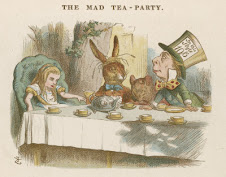Her major points are 1) In the absence of formal structure, informal friendship structures will take over and will be used by a few to grab power because there's nothing to stop them from doing so. 2) Unstructured groups aren't effective in getting things done. Someone needs to be in charge and give directions with an assumption the work will get done. Otherwise it's like herding cats. 3) What makes some small groups highly effective cannot be duplicated in larger groups. Again, the processes do not scale. New processes, structures, and approaches are needed. 4) "The only groups that can organize a national activity are nationally organized groups." Sounds obvious, doesn't it? But unstructured groups sometimes think they can have a national impact. Not so.Read the whole thing. Many of today's tea party activists and groups are well-known for their pride in the fact that the tea party movement has no overarching organizational superstructure. Perhaps, more than anything else, it was this antipathy to a centralized form that allowed the movement to be so easily hijacked by supporters and partisans of the Republican party. Understandably, the inclination toward radical decentralization was seen as a condition of political independence, but it paradoxically left the disparate groups across the country open to attack and infiltration by more efficiently structured and centralized organizations, in this case the GOP, which has significantly undermined, if not completely destroyed, the tea party movement's political independence. So long as tea party groups allow themselves to be held hostage by the Republican party and the ideology of the two-party state, they will be neither free nor independent, and all their efforts will be in vain. They will simply repeat the mistakes of the anti-war movement, which was hijacked by the Democratic party and then quietly put to death once the Democrats returned to power.
Her thoughts on how to effectively organize a democratically structured organization or party are 1) delegate authority specifically and democratically, 2) require authority to be responsible to those who choose them (that's "require", not "ask"), 3) distribute authority among as many as possible, 4) rotate tasks often, 5) allocate tasks rationally, 6) diffuse information quickly, 7) give everyone equal access to resources. To do this, the organization needs to . . .
Structure, Tyranny and the Tea Party Movement
In an article at CAIVN, Bob Morris of Polizeros discusses the importance decision-making processes and organizational structures play in the development of any politically-minded group from a small circle of friends or like-minded individuals into a larger association that is not based on pre-existing social relationships. In the process, Bob provides a quick rundown of an apparently classic work on the subject from 1971 by Jo Freeman, entitled The Tyranny of Structurelessness:
Subscribe to:
Post Comments (Atom)







No comments:
Post a Comment